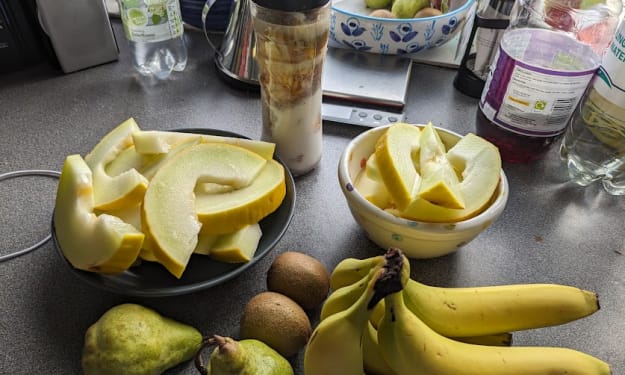Foods Sources That Are Rich In Vitamin D
Vitamin D and its source

Research and recent trend have proven that vitamin D and its role in our overall health journey is growing tremendously. We understand that vitamin D affects many bodily functions, including bone health. Research also suggests low vitamin D levels may be a risk factor for autoimmune diseases. Several people don't get sufficient vitamin D. It's hard to know how many people are vitamin D deficient because experts are still debating what target levels should be.
According to research, about 24% of the population in the United States is deficient in vitamin D. Other regions of the world may have higher rates of deficiency. It is estimated that more people in Europe are deficient, up to about 40%.
Human beings produce their own vitamin D when exposed to sunlight. There are several different reasons why getting adequate vitamin D this way is hard that aim to minimize the risk of skin cancer by covering up, wearing sunscreen, and avoiding leaving indoors during the hours in which the sun is at its peak. Also, depending upon where you live in the world, it may just not be always possible to have year-round sun exposure, which is why eating vitamin D-rich food or supplements is best.
Daily Recommended Dose Of Vitamin D
Vitamin D's daily recommended dosage is 800 IU. The vitamin D content is mentioned as a DV percentage on the nutrition labels on the food packaging. It lets you know what portion of your daily vitamin D requirement the food will provide. The best options to get vitamin D is from food and Sun. And in case you need a vitamin D supplement in addition to these, you should find out through a doctor.
Food Sources of Vitamin D
Below are seven healthy foods that are high in vitamin D:
Salmon
Salmon is a well-known fatty fish, and a remarkable source of vitamin D. According to the United States Department of Agriculture (USDA), 100 grams serving of farmed Atlantic salmon contains 526 IU of vitamin D, 66% of the DV in other words. The vitamin D content in salmon significantly depends on whether it is wild or farmed and which time of the year it is caught. Normally, wild-caught salmon has more vitamin D.
A study observed that the vitamin D content of salmon caught in the Baltic sea ranged from 556–924 IU of vitamin D per 100-gram serving, providing 70–111% of the DV. In a 100-gram serving, farmed salmon contains about 66% of the DV, while wild salmon may contain up to 160% of the DV.
Fatty fish such as herring and sardines
Herring is a popular fish eaten around the world. It is small, but a great source of vitamin D. Fresh Atlantic herring provides 214 IU per 100-gram serving, which is 27% of the DV. Pickled herring is also a source of vitamin D and provides 113 IU per 100-gram serving, or 14% of the DV.
Canned sardines are also a beneficial source of vitamin D. A 100-gram serving provides 193 IU or 24% of the DV. Other types of fatty fish like halibut and mackerel provide 190 IU and 643 IU per 100-gram serving, respectively.
Cod liver oil
Cod liver oil is a quite popular supplement. You can take nutrients from cod liver oil that are hard to obtain from other sources if you don't like fish. It's an excellent vitamin D source.
At about 450 IU per teaspoon, it gives in 56% of the DV. For many years now, it has been used to treat vitamin D deficiency, rickets, psoriasis, and tuberculosis. It is also high in other nutrients like vitamin A and omega-3 fatty acids.
Canned tuna
Most people love canned tuna because of its cost, flavour and easy storage methods. It is cheaper than fresh fish and is also a very good source of vitamin D. Canned light tuna has up to 269 IU of vitamin D in a 100-gram serving, which is 34% of the DV. You must prefer light canned tuna, which is obtained from smaller fish and is lower in mercury as a buildup of methylmercury can lead to serious health concerns.
The Environmental Defense Fund (EDF) suggests only a 100-gram serving of light tuna per week. You can learn more about mercury consumption by talking to your doctor about the appropriate amount of tuna to eat per week.
Egg yolks
Fish are not the only vitamin D. Whole eggs are another excellent and wonderfully nutritious food source. Most protein in an egg makes it white, while the vitamins, minerals and fats can be found in its yolks. A large yolk from one large egg may contain 37 IU of vitamin D or 5% of the DV.
Factors that affect the content of vitamin D in egg yolks include sun exposure of the chicken and the vitamin D in the chicken feed. Exposing the liquid yolk to UV light helps increase vitamin D content in the egg.
Choosing eggs from chickens raised outside or marketed as high in vitamin D can be a great way to meet your daily requirements. Eggs from commercially raised chickens contain around 37 IU of vitamin D per yolk. On the other hand, eggs from chickens raised outside or fed vitamin D-enriched feed contain much higher levels.
Mushrooms
Mushrooms are the only acceptable vegetarian source of vitamin D besides fortified foods. Like humans, mushrooms can synthesize vitamin D when exposed to UV light. Mushrooms produce vitamin D2, which is less effective than vitamin D3, produced by animals.
Wild mushrooms are excellent sources of vitamin D2 because of their long exposure to UV light. Different mushrooms contain different vitamin D content. For example, one cup of morels and cremini mushrooms contain 136 IU of vitamin D, 17% of the DV and 110 IU of vitamin D, 139% of the DV, respectively.
Vitamin D-fortified foods
The natural reserves or sources of vitamin D and Pharmacist Recommended Supplements are very limited, particularly for those who are vegetarian or don't like fish. However, some food products that don't naturally have vitamin D are fortified with this nutrient, such as:
Cow's milk
Cow's milk is a good source of numerous nutrients, including calcium, phosphorous, and riboflavin. In many countries, cow's milk is fortified with vitamin D. In the US, a cup of fortified cow's milk has 115 IU of vitamin D or about 15% of the DV.
Soy milk
As vitamin D is found in animal products mostly, vegetarians and vegans may find it trickier to get enough. This is why plant-based milk substitutes such as soy milk are often fortified with vitamin D and other vital nutrients found in cow's milk. One cup contains around 100–119 IU of vitamin D or 13–15% of the DV.
Orange juice
About 65% of people around the world are lactose intolerant, and around 2% have a milk allergy. So some companies fortify orange juice with vitamin D and other vital nutrients, such as calcium. One cup of fortified orange juice in breakfast can give you up to 100 IU of vitamin D, or 12% of the DV.
However, orange juice isn't a very good option for people with acid reflux as it can worsen symptoms. Please consult your doctor for more information.
Cereal and oatmeal
Fortified cereals with vitamin D are also available. Different kind of cereals has different vitamin D content. A cup of fortified wheat bran flakes contains 145 IU of vitamin D, which makes 18% of the DV. A cup of fortified crisp rice cereal has 85 IU of vitamin D or 11% of the DV.
However, not all cereals will contain vitamin D. You should check the nutrition label to find out how much vitamin D is present in the product. Although fortified cereals and oatmeal do not provide as much vitamin D as natural sources, still these are good options.
Conclusion
The foods enlisted above are some of the top sources of vitamin D and are easily available. Eating these foods is a great way to ensure you get enough of this important nutrient. Though our bodies can produce vitamin D using UV light from the sun, it does not always meet your body's needs. The Centers for Disease Control (CDC) recommend limiting UV exposure to reduce the risk of skin cancer. Hence, foods and supplements rich in vitamin D are usually the best methods to safely meet your vitamin D needs consistently.
About the Creator
Harbor Compounding pharmacy
Harbor Compounding Pharmacy in California to provide better health solutions. The aim of this health pharmacy is to provide solutions to all health-related issues. It provides treatment for all diseases and health counseling.






Comments
There are no comments for this story
Be the first to respond and start the conversation.